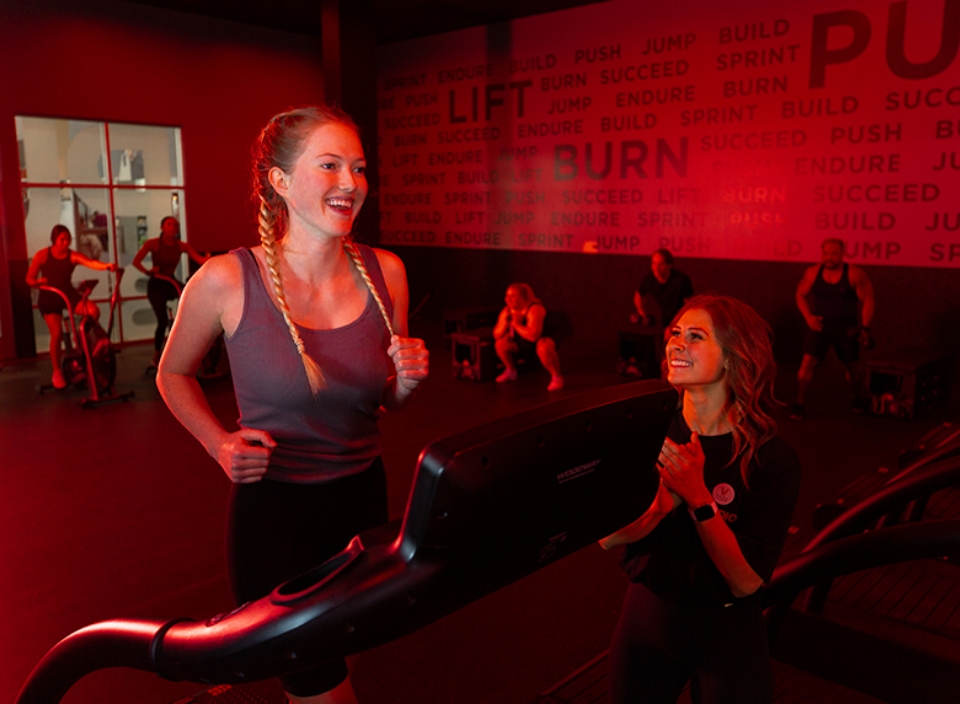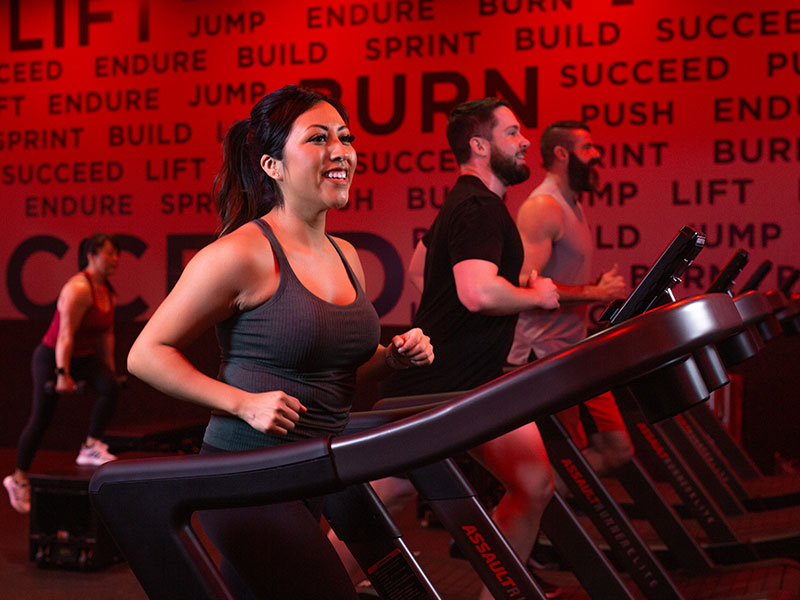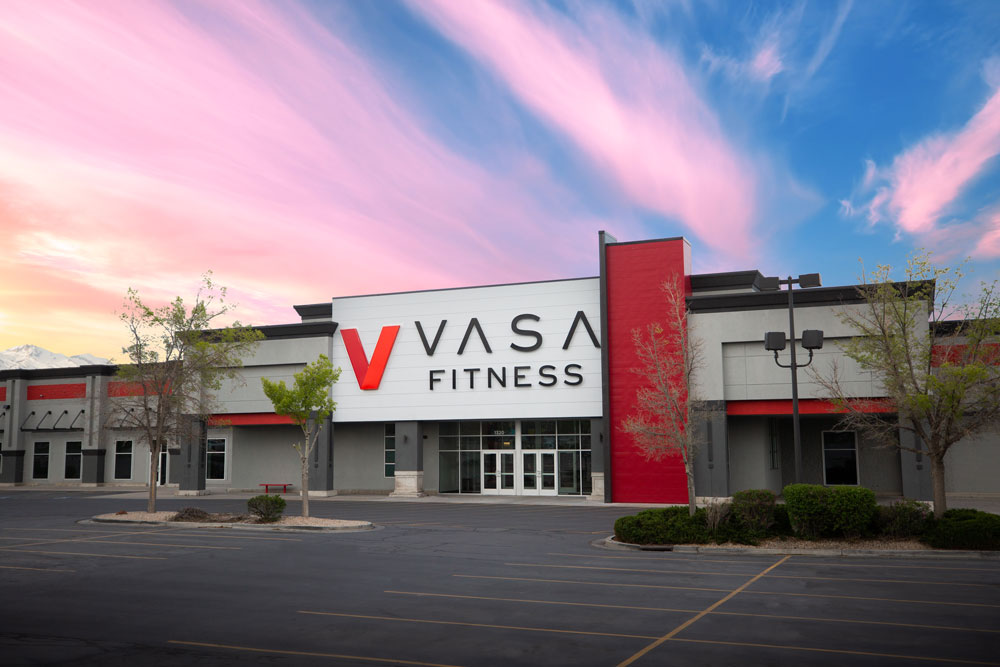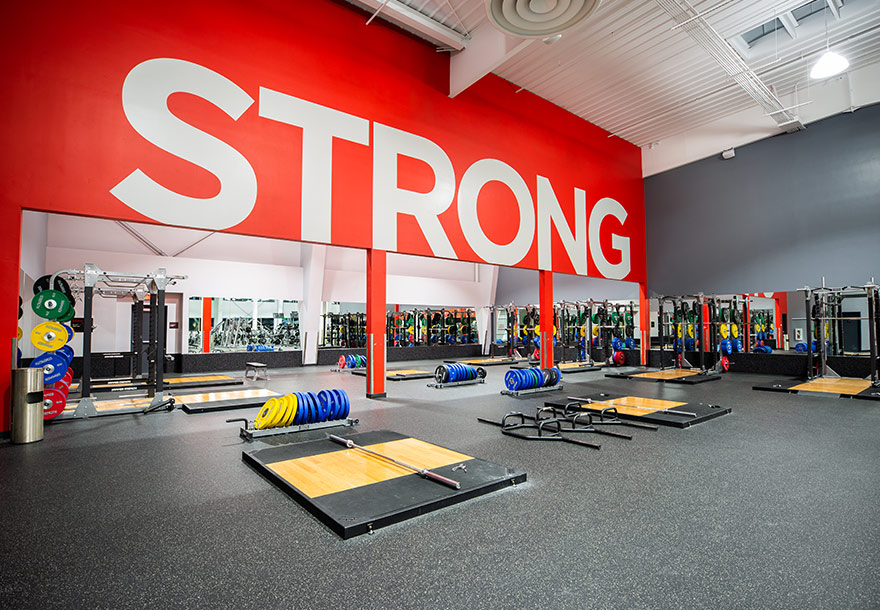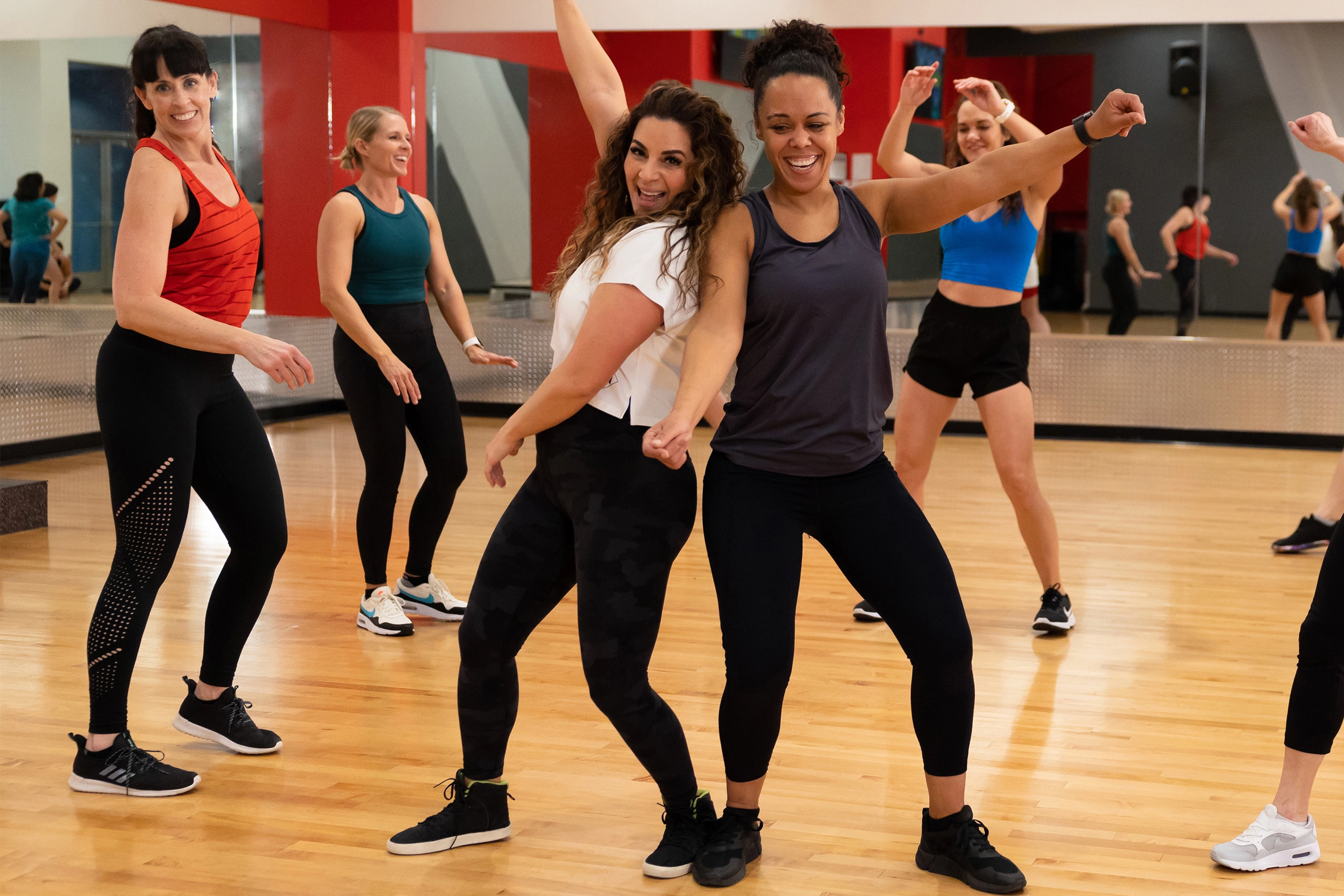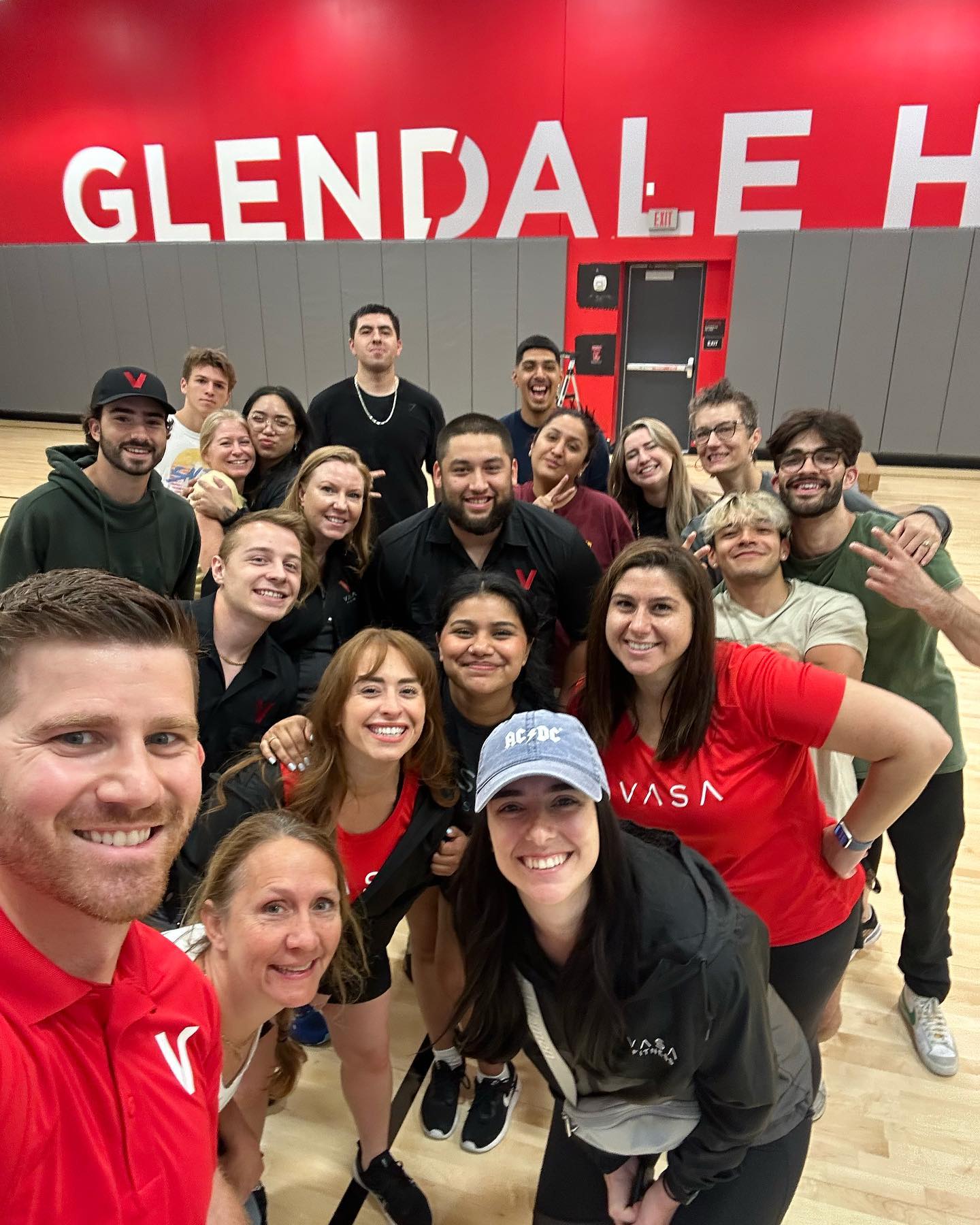If you’re new to working out, gym slang like AMRAPs, supersets, and selectorized machines might seem like a foreign language. But don’t worry! You don’t need to hire a personal trainer to understand gym jargon or feel comfortable in the fitness industry. We’re here to help translate gym lingo for you. Below is a list of common gym slang and gym phrases you might hear during your next workout.
AMRAP: As many reps as possible or as many rounds as possible; usually done in a set amount of time before fully resting. This number will depend on whether you’re lifting heavier or lighter weights.
BMR: Basal metabolic rate: the amount of energy (calories) used by the body at rest; doesn’t take into consideration activity or workouts.
Body Composition: The breakdown of lean mass (muscle, organs, bones, and water) compared to fat, usually read as percent body fat. This often changes as people continue on their fitness journey.
Bulking: People who are bulking are gaining weight in the form of muscle mass. They eat and train in a way that promotes muscle growth.
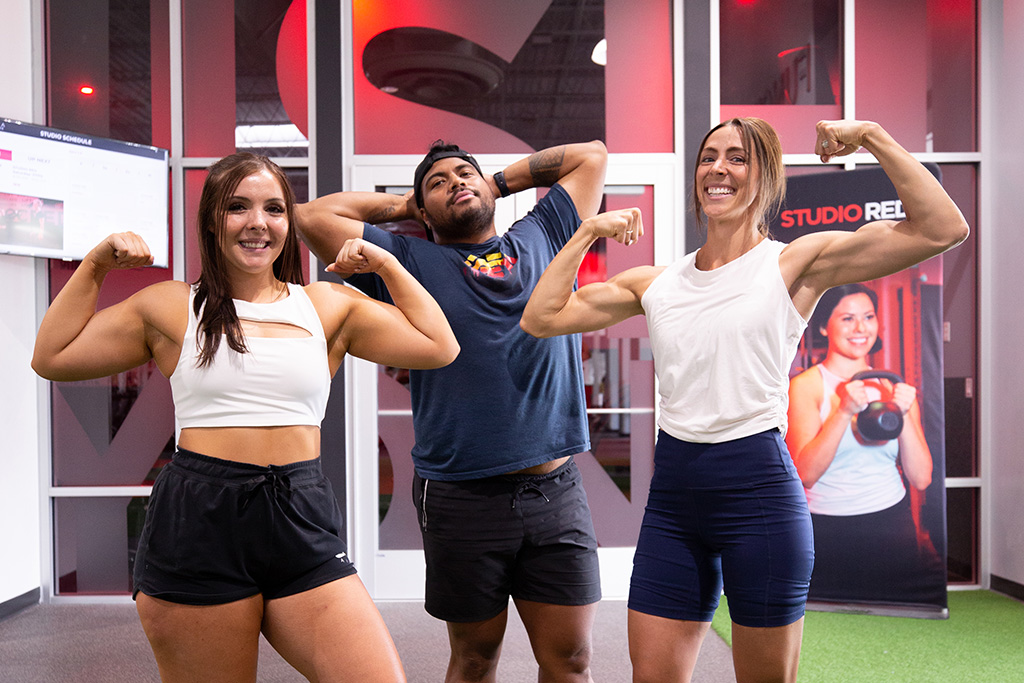
Cardio: Any sustained cyclical activity that elevates the heart rate for at least 10 minutes including walking, jogging, running, the elliptical, and stairs.
Circuit: Completing three or more exercises in a row before repeating any of them. You’ll move from one exercise to the next before resting.
Compound Exercise: Compound exercises use more than one joint and multiple muscle groups, such as the bench press.
Core: The torso excluding the arms, legs, and head.
CNS: Your central nervous system. This system is used when weightlifting and other types of resistance training.
DOMS: Delayed onset muscle soreness; caused by tiny tears in the muscle after a hard workout that can be alleviated with lighter movement through full ranges of motion.
Free Weights: Weights held in the hands or placed on the body that do not have any fixed attachments such as kettlebells, dumbbells, and barbells. Exercises performed with free weights often allow you to use your entire range of motion for an exercise, which allows you to get better muscle contraction.
Functional Training: A style of training that helps a person’s day-to-day activities, like carrying groceries, picking up kids, or taking a jump shot. This is typically done in an open place on the gym floor.
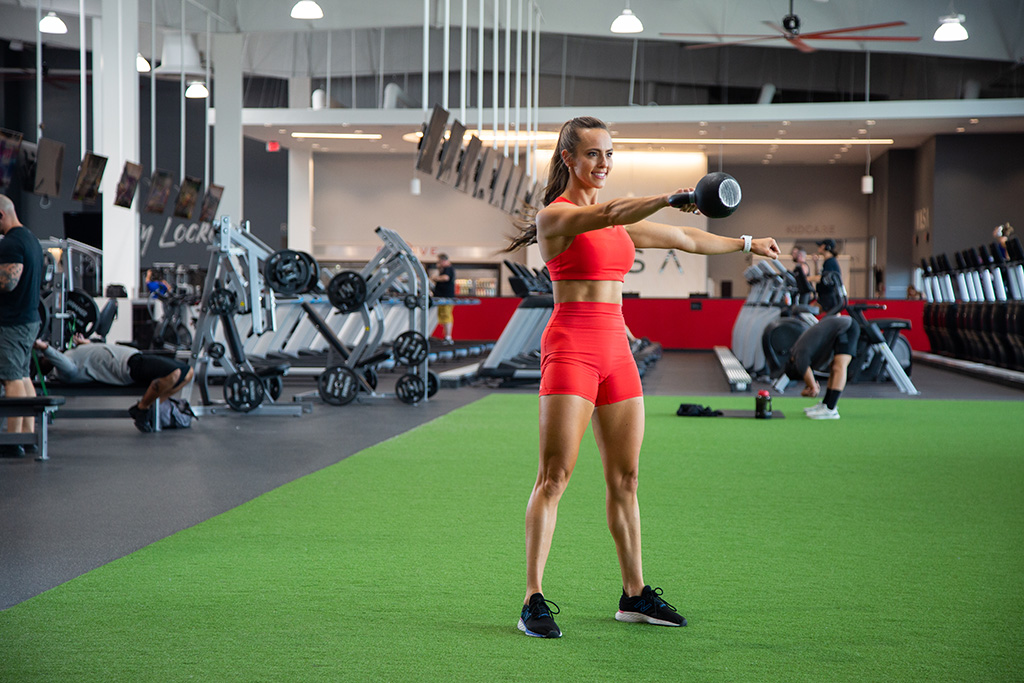
Gains: The progress you’ve made since starting your fitness journey. This might be increasing how much weight you can lift or improving your maximum weight on exercises like bench presses and lateral raises.
Group Fitness: Large group workouts with a single instructor teaching from the front of the room with movements usually choreographed to music.
Guns/Pipes/Pythons: Strong-looking arms with high muscle mass. Exercises like bicep curls build someone’s guns.
Gym Rat: Gym rats are people who spend a lot of time at the gym and care about their physique. They often have very low body fat and work to see muscle gains.
HIIT: High-intensity interval training involves short bursts of work followed by a longer rest period, usually based on heart rate response. High-intensity training is a great way to burn more calories and body fat.
Intervals: Interval training is characterized by periods of work and rest typically using cardio machines (example: 30 seconds of running followed by 30 seconds of rest).
Invisible Lat Syndrome: Walking around with the arms slightly pulled off the body and a proud chest as if the lats (muscles under the arms) were extremely large.
Isolation Exercise: An isolation exercise uses one joint and a single muscle group.
Powerlifting: The barbell sport that includes the three lifts, deadlift, bench press, and squat.
“PR or ER”: A phrase yelled by gym bros attempting to a lift a weight that will be a personal record (PR); if the rep is failed, they jokingly say they will end up in the emergency room.
Pre-workout: A supplement you take before strength training or a cardio workout. It helps increase energy and enhance performance.
Pump: The feeling after completing a hard weight training set in which a lot of blood has accumulated in the worked muscle.

Quads/Hams: Strong-looking upper legs.
Rep: A full action of lowering and raising a weight; multiple reps equal a set.
Selectorized Machines: Machines that use a pin to select the amount of weight that will be used.
Set: Multiple reps of a movement that equal 1 unit of work (example: 10 reps of a bicep curl could equal one set).
Shredded/Ripped: Low body fat percentage so muscles are extremely visible; however, not usually a good indicator of overall health.
Superset: Two exercises done back-to-back using opposing muscle groups followed by a period of rest.
Swole: The feeling after completing a hard set in which a lot of blood has accumulated in the worked muscle.
TRX: Total-body resistance training; usually refers to the suspension trainer with two straps and allows the user to manipulate their bodyweight to complete a wide variety of exercises.
Warm–Up: A series of movements and exercises that prepare the body to work out.
Weightlifting: The Olympic sport that includes the two lifts, clean & jerk, and the snatch.
Weight Stack: Gymgoers use this term to refer to the stack of weights on a machine that can be adjusted using a pin.
Wheel: A 45-pound plate used in the weight room. It’s typically added to a barbell for exercises such as squats or bench presses.
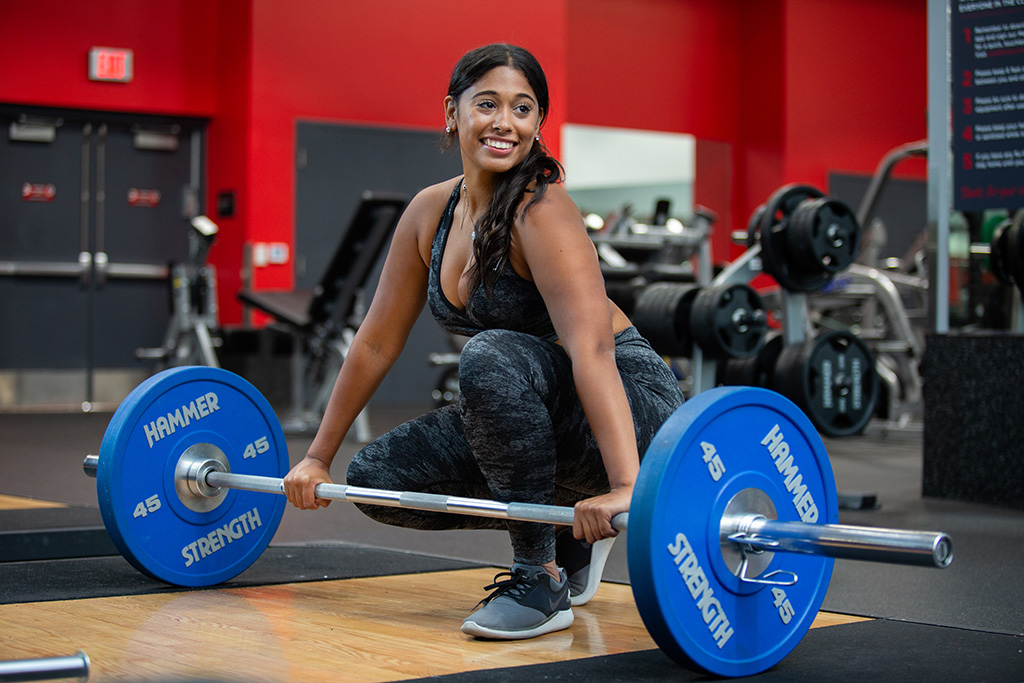
RECOMMENDED
SUBSCRIBE TO OUR BLOG
Enter your email to start receiving our blog emails!
